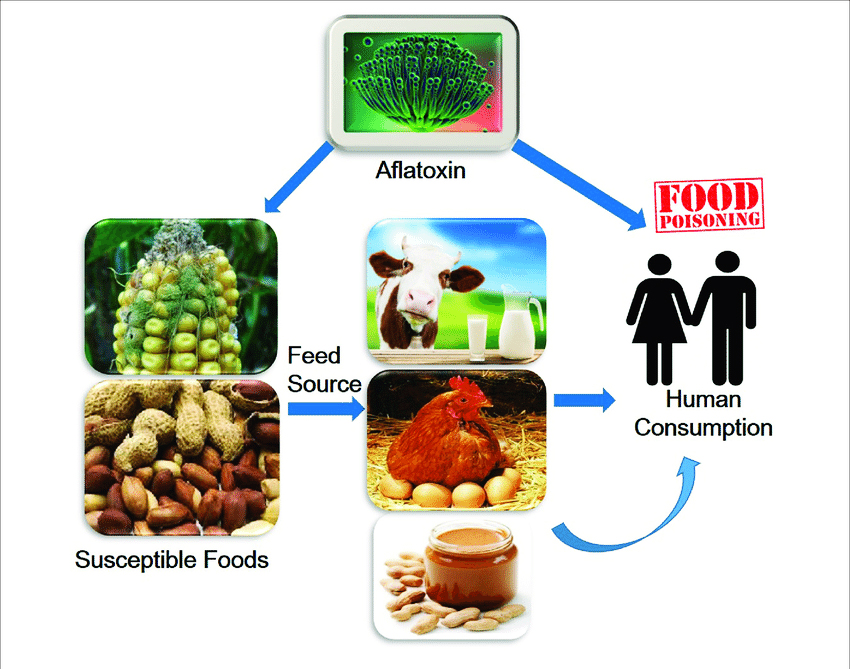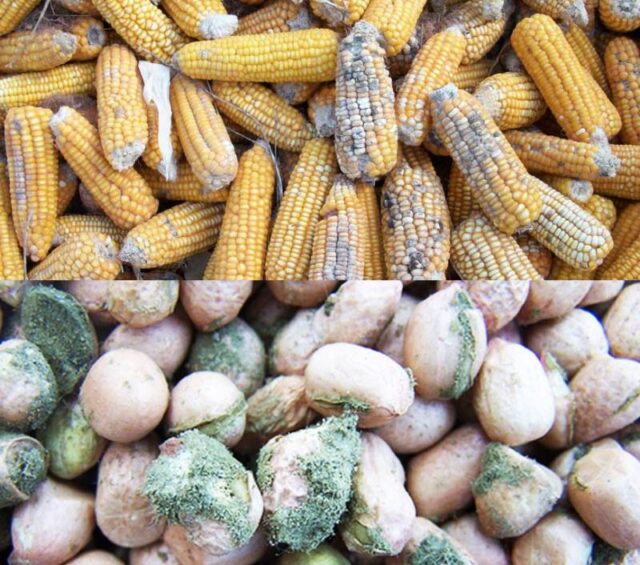By Beatrice Nakibuuka
A report released in 2018 by the Partnership for Aflatoxin Control in Africa (PACA), indicated that 45 per cent of grains produced in Uganda are contaminated with aflatoxins, a deadly compound that causes cancer.
This is the reason Uganda does not export as much agricultural produce to the international markets.
Aflatoxins are a type of toxins produced by fungi that are found on agricultural crops.
Fungi, a micro-organism, can contaminate food that is in the garden because it has high moisture content. These in turn cause plant diseases.
Another type of fungi affects drying food produce with low moisture content.
As the food dries, these fungi find themselves with suitable temperatures and water content that allow them to grow and multiply.
According to Prof Archileo Kaaya, the head of department of Food Technology and Nutrition at Makerere University, this type of fungi, if present, can grow onto the food, feed on it, then produce waste products so that when you eat the food, you may suffer food intoxication.
“Aflatoxins are, therefore, a type of toxins that are produced by molds. They are a highly toxic and carcinogenic compound produced by the fungi, aspergillus flavus,” Prof Kaaya says.
Not even cooking or roasting of the plant produce can kill the toxins.
This is because the roasting usually happens at 150 degrees Celsius, yet aflatoxins can only be destroyed at 400 degrees Celsius.
Foods affected
– Foods that are dried at home can be contaminated by aflatoxins. These include maize, cassava, sorghum, ground nuts, soybeans, millet, rice (cereals and legumes).
– Milk (including milk from lactating mothers), meat, eggs and poultry.
– Animal feeds because they are usually made from contaminated ingredients like maize, and silverfish, among others food products.
– Dry fish, especially silverfish, may grow aflatoxic molds if not well-dried.
– Dried spices like chili.
– Beer made from sorghum and barley and local brew. The fermentation process does not eliminate aflatoxins.

How they come about
According to Prof Kaaya, soil is the best medium for micro-organisms.
When farmers dry their food produce on the bare ground, it increases the risk of molds developing in the produce.
Drought conditions also stress the plants that they dry before they actually mature, thereby creating favorable conditions for the growth of molds.
“Some farmers leave the produce, especially maize to dry in the garden. Since there is heat during day and dew in the night, molds grow on the maize to produce aflatoxins,” Prof Kaaya adds.
Sometimes the foods are not dried to the right moisture content and poor storage creates an environment for the growth of molds.
Meats and poultry become contaminated because they are fed with feeds whose raw materials are contaminated.
Rabbits, dogs and cows are very sensitive to aflatoxins and can die once they consume high quantities of them.
Why you should worry
There are several reasons why we should worry about aflatoxins but most importantly because they have both economic and health impacts.
Prof Kaaya says it is hard to completely eliminate aflatoxins given the high temperature and humidity in Uganda.
When the produce is rejected at the export market, it is supposed to be destroyed but people do not want to make losses so they sell it for consumption.
In Kenya, in 2004 several people were hospitalized, and 125 of them died after eating maize contaminated with Aspergillus flavus.
In June 2016, 20 people died of acute toxicity after eating molded maize and 48 people were hospitalized in central Tanzania.
If one consumes food that has very high levels of aflatoxins, they can suffer acute toxicity, according to Amanda Twebaze, a freelance nutritionist in Kampala.
“The cases of toxicity present with jaundice, abdominal pain, vomiting, diarrhoea and ascites.
“Consuming foods containing aflatoxins exposes an individual to chronic toxicity which is likely to cause cancer of the liver,” she says.
The toxins cause stunting in infants. In Uganda, about 29 per cent of children below five years are reported to have stunted growth as a result of eating foods containing aflatoxins but this percentage rises to 51 in Buheju district.
Aflatoxins also deny the body from receiving nutrients such as zinc, iron, proteins and some vitamins thereby lowering its immunity and causing kwashiorkor in children. These impacts can also affect animals.
Prof Kaaya also remarks that toxins can also cross the placental barrier in expectant mothers to affect the unborn child.
Remedies
According to Benson Tayebwa the District Production and Marketing Officer in Ibanda district, farmers should ensure that they sort and grade seeds to remove diseased, broken or shrank grains that are likely to be contaminated from the healthy ones. Those that seem to be contaminated should be thrown away.
“Proper harvest handling is usually very important because if not handled properly, your energy can just go to waste,” Tayebwa says, adding that the crops, after harvesting, must be exposed to enough sunlight so that they dry properly.
This will prevent the development of molds and fungus.
“Also, farmers can use the salt method to ensure their foods are dried to the right moisture,” he says.
He also recommends good agricultural practices by farmers starting with land preparation, selecting healthy seeds, weeding, applying the right fertilisers at the right time and irrigating would help produce crops that are healthy and can resist mold attacks.






















